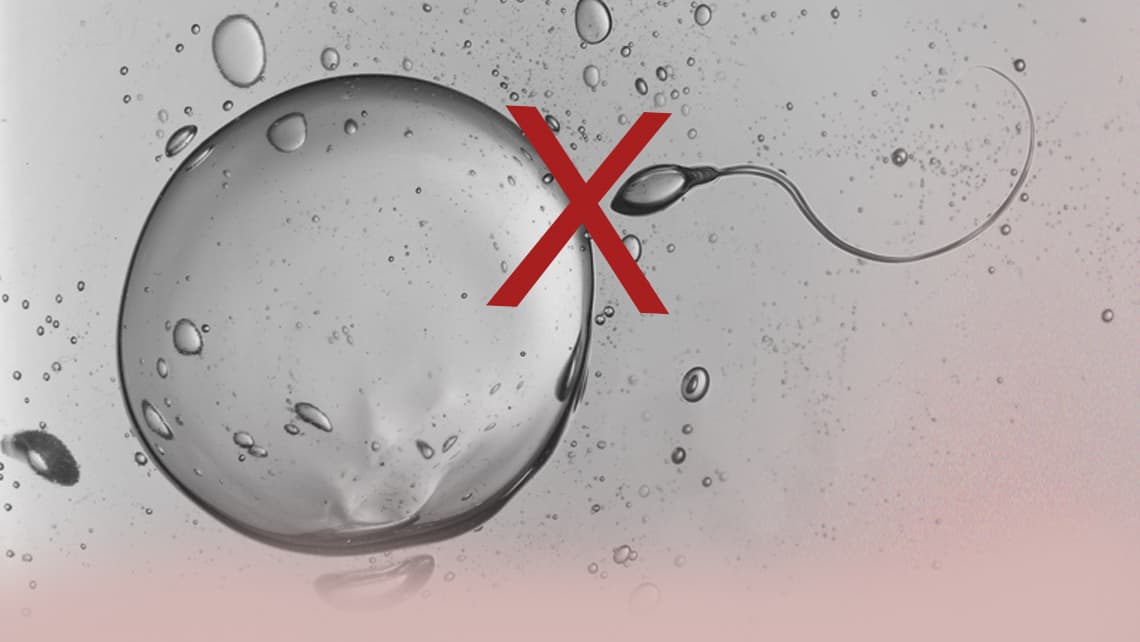
Why hasn’t my assisted reproduction treatment worked?
The miracle of conception involves an intimate union between the ova and spermatozoon, appropriate evolution of the fertilised embryo and, furthermore, an ideal environment inside the uterus so that implantation can take place. Whilst this process might seem simple, it is much more complex than we might think, particularly in human beings. Only 30% of our conceptions end in the birth of a healthy child, quite the opposite to other living organisms which have a much higher fertility rate.
When, after overcoming the first few steps in the complex process of in vitro fertilisation and obtaining embryos that can be transferred to the uterus, patients find that at the end of it all they do not get that sought-after positive pregnancy test, it is usually a cause for significant frustration and it is hard for them not to wonder why, if the embryo was fine, they did not get pregnant.
One of the main reasons for failed treatment is the quality of the embryo itself. Embryos remain in incubators in the laboratory for the length of time that is needed in order for appropriate embryo selection to be performed and for a maximum of 5 or 6 days. The better their evolution and the better their quality, the greater the chances of them implanting.
So what has gone wrong if embryos evolve perfectly well but, even so, do not implant? The first thing that needs to be taken into account is that not all embryos that appear to be optimum quality embryos implant and lead to the birth of a healthy child. However, it is important for embryos to be ‘chromosomally normal’ or, in other words, the embryo needs to be correct ‘both in terms of its appearance and in terms of its genetic structure’.
Human beings tend to generate a number of embryos with chromosomal abnormalities (errors in the number of chromosomes and how they are arranged). The frequency of this occurrence tends to increase as women grow older and, in other cases, due to severe male factors or fathers who are carriers of abnormalities in their karyotype, for example. Chromosomal abnormalities in embryos, known as ‘aneuploidies’, are one of the most common causes of implantation failure. With this in mind, when the time comes to choose the best embryo for transfer, it is possible to know if it has chromosomal abnormalities by carrying out pre-implantation genetic diagnosis or comprehensive chromosome screening on the embryos beforehand.
However, there are other reasons for failed embryo implantation and they include the following:
- An unreceptive endometrium (the layer of the uterus where embryos implant).
- Insufficient hormone levels which are a requirement during implantation (for example, progesterone).
- Complicated embryo transfers that increase chances of uterine contractions and the risk of embryo expulsion.
- A uterus that has anatomical abnormalities (fibroids, polyps, adhesions, congenital abnormalities in the shape of the uterus, etc.).
- An unhealthy lifestyle which does not favour implantation (obesity, smoking, drug consumption, etc.) or environmental factors.
- Immunology causes, amongst others.
Even so, sometimes we cannot determine what the exact cause was because many of these processes are complex and unknown. However, one thing is for sure: the more embryos that we can transfer, the greater our chances of achieving a pregnancy. Recurrent implantation failure (RIF) exists, therefore, when we have transferred at least 4 good quality embryos without achieving a pregnancy.
Whilst keeping the aforementioned in mind, it is important to distinguish between recurrent implantation failure and recurrent in vitro fertilisation (IVF) failure. In the first case, we are referring to good quality embryos and, in the second, we include all the situations that do not lead to a successful pregnancy following IVF treatment. The most significant cause in the latter is the mother’s advanced age, but it also happens when embryos are not optimum quality embryos, when there are failures during fertilisation, when the number of oocytes that have been retrieved is low due to poor ovarian reserve, as a result of uterine abnormalities, or when recurrent pregnancy loss or repeated implantation failure takes place.
It is not always easy to determine the cause, particularly because there is often more than one reason for it. This is why a comprehensive approach to patients who have suffered from failed treatment needs to be performed by a multi-disciplinary and personalised team. The aim must be to search for solutions based on each individual case.
